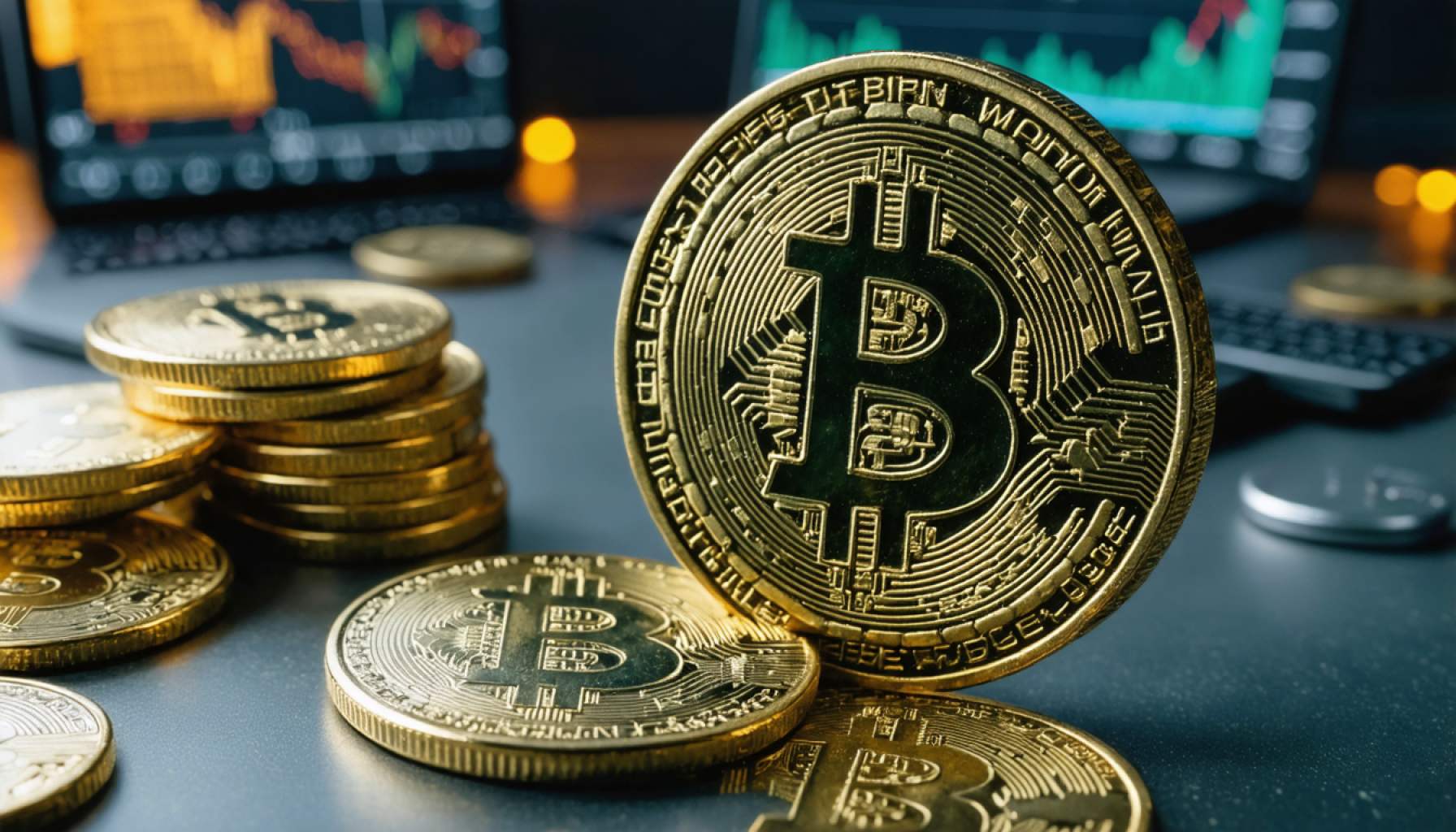- Bitcoin’s value, hovering around $80,000, faces pressure from inflation concerns and political tensions, notably influenced by U.S. President Trump’s tariffs.
- Federal Reserve Chair Jerome Powell hints at potential easing of monetary policy, suggesting current inflation fears may be temporary.
- Arthur Hayes of BitMex and market analysts see potential for Bitcoin to rise again, fueled by a flexible tariff approach and Fed’s accommodative policies.
- The broader economic landscape remains uncertain, with Bitcoin’s future tied to global economic movements and fiscal shifts.
- Investors should focus on fiscal cues to navigate Bitcoin’s volatile trajectory, as adaptability remains crucial in evolving financial markets.
As frost descends on financial markets, Bitcoin stands at a precipice, volatile yet inherently resilient. This digital titan, whose value galloped towards $90,000, now teeters around $80,000, shadowed by inflation fears and political maneuvering. Wall Street experts and crypto enthusiasts are scratching their heads, wondering what comes next.
In recent weeks, Bitcoin’s resolve has been tested. Inflation jitters, compounded by U.S. President Donald Trump’s tariff threats, have ground expectations to a halt. Goods from economic giants like Canada, Mexico, and China face tariffs from April 2, casting doubt in the minds of global investors.
The skies, however, may yet clear. Enter Arthur Hayes, the astute cofounder of BitMex. Hayes discerns a pivotal shift in the rhetoric emanating from Washington. Federal Reserve Chair Jerome Powell orchestrated a subtle yet profound shift in the central bank’s narrative, suggesting that the inflationary storm might be fleeting, merely a passing squall. The Fed’s quiet flirtation with quantitative easing whispers promises of gentle financial leniency.
Hayes, granted a recent pardon alongside BitMex colleagues for past misdemeanors, suggests Bitcoin could ascend from this tempest. His outlook is buoyed by Powell’s clues: tariffs concern him less, and his easing of monetary conditions may act as salve upon troubled crypto waters.
Market voices echo Hayes’s sentiments. Markus Thielen of 10x Research signals a forthcoming rally, attributing potential recovery to Trump’s newfound tariff “flexibility.” Thielen’s insights suggest Bitcoin could soar anew as the Federal Reserve adopts an accommodating stance, potentially counteracting tariffs’ inflationary pressure.
Yet, the digital gold’s dance with uncertainty hinges upon broader economic ebbs and flows. Powell’s dovish leanings might tip the scales, nurturing stock recoveries that breathe life into the crypto sphere. As inflation looms and tariffs wield their power, Bitcoin holds steadfast, a beacon amidst an ever-shifting financial seascape.
The lesson? In a world where economic storms can appear out of nowhere, adaptability is the cornerstone. Savvy investors must watch for these subtle fiscal signals to navigate Bitcoin’s turbulent journey toward potential rebounds and uncharted valleys.
Bitcoin’s Resilience Amidst Economic Uncertainty: What Lies Ahead?
Understanding the Current Bitcoin Landscape
Bitcoin’s journey through volatile financial markets highlights its inherent resilience despite being under pressure from inflation fears and geopolitical tensions. The cryptocurrency, standing at around $80,000, faces challenges including U.S. tariff threats but remains a focal point for investors seeking refuge from traditional market disturbances.
Inflation and Tariffs: Impact on Bitcoin
Inflation has surged as a key concern globally. Tariffs imposed on countries like Canada, Mexico, and China add to the inflationary pressure, potentially dampening economic growth. Bitcoin, often viewed as a hedge against inflation, finds itself at a crossroads where fiscal and monetary policies could influence its trajectory.
Key Market Perspectives
1. Arthur Hayes and the Federal Reserve’s Role: Arthur Hayes of BitMex suggests that Jerome Powell’s recent indications of a possible quantitative easing signal could stabilize the market. If tariffs lessen in impact due to policy shifts, Bitcoin might see increased adoption and valuation.
2. Markus Thielen’s Optimism: The prospect of Trump’s tariff flexibility and the Federal Reserve’s accommodative approach suggest potential growth for Bitcoin. This environment can encourage more investments in the cryptocurrency market.
Steps for Investors
– Monitor Economic Indicators: Keep a close eye on inflation rates and Federal Reserve meetings. Policy changes can significantly impact Bitcoin prices.
– Diversify Portfolios: Hold a balanced mix of assets to mitigate risk. Cryptocurrencies should be a part of a broader investment strategy.
– Stay Updated on Political Moves: Tariff changes and international relations can have immediate effects on market confidence and investment inflows into Bitcoin.
Pros and Cons of Bitcoin in This Climate
– Pros:
– Decentralization: Offers an alternative to traditional finance.
– Hedge Against Inflation: Historically seen as a store of value in times of economic distress.
– Cons:
– Volatility: Price fluctuations can lead to substantial financial risk.
– Regulatory Challenges: Ongoing global regulatory scrutiny remains a concern.
Future Predictions for Bitcoin
Industry experts anticipate potential volatility leading to cautious optimism regarding Bitcoin’s growth. If fiscal stimuli and favorable policies prevail, the cryptocurrency could gain momentum, serving as a reliable store of value and investment vehicle.
Actionable Recommendations
– Educate yourself on cryptocurrency and market dynamics.
– Use tools such as stop-loss orders to protect investments from volatile swings.
– Engage in forums or listen to expert analyses to understand market trends better.
For more insights into crypto investments, visit CoinDesk.
Bitcoin’s path forward depends largely on how adaptive it remains in the face of economic transformations. As policies shift and global dynamics evolve, staying informed and flexible is key to navigating potential market opportunities.
